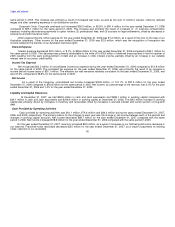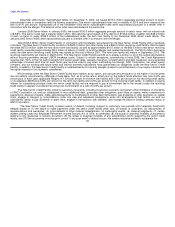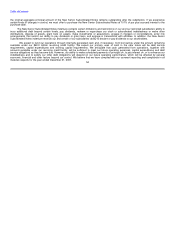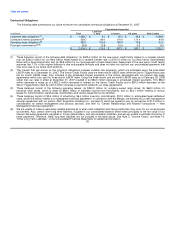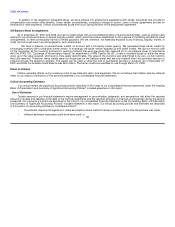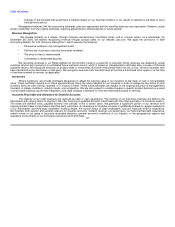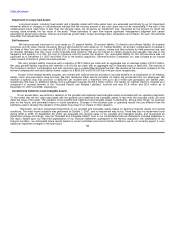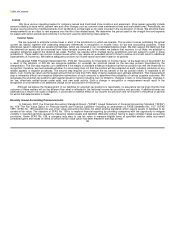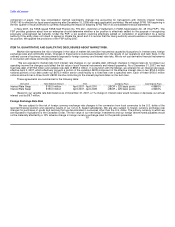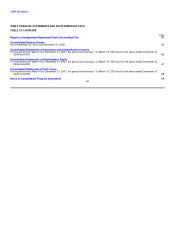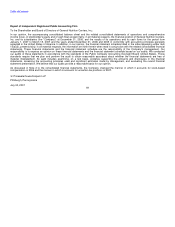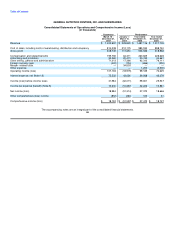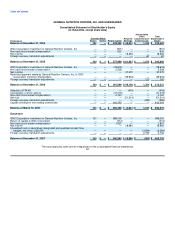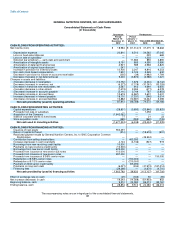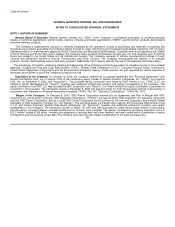GNC 2008 Annual Report Download - page 63
Download and view the complete annual report
Please find page 63 of the 2008 GNC annual report below. You can navigate through the pages in the report by either clicking on the pages listed below, or by using the keyword search tool below to find specific information within the annual report.
Table of Contents
Leases
We have various operating leases for company-owned and franchised store locations and equipment. Store leases generally include
amounts relating to base rental, percent rent and other charges such as common area maintenance fees and real estate taxes. Periodically, we
receive varying amounts of reimbursements from landlords to compensate us for costs incurred in the construction of stores. We amortize these
reimbursements as an offset to rent expense over the life of the related lease. We determine the period used for the straight-line rent expense
for leases with option periods and conforms it to the term used for amortizing improvements.
Income Taxes
We are required to estimate income taxes in each of the jurisdictions in which we operate. This process involves estimating the actual
current tax liability together with assessing temporary differences in recognition of income (loss) for tax and accounting purposes. These
differences result in deferred tax assets and liabilities, which are included in our consolidated balance sheet. We then assess the likelihood that
the deferred tax assets will be recovered from future taxable income and, to the extent we believe that recovery is not likely, we establish a
valuation allowance against the deferred tax asset. Further, we operate within multiple taxing jurisdictions and are subject to audit in these
jurisdictions. These audits can involve complex issues which may require an extended period of time to resolve and could result in additional
assessments of income tax. We believe adequate provisions for income taxes have been made for all periods.
We adopted FASB Financial Interpretation No. (FIN) 48, "Accounting for Uncertainty in Income Taxes," at the beginning of fiscal 2007. As
a result of the adoption of FIN 48, we recognize liabilities for uncertain tax positions based on the two-step process prescribed by the
interpretation. The first step requires us to determine if the weight of available evidence indicates that the tax position has met the threshold for
recognition; therefore, we must evaluate whether it is more likely than not that the position will be sustained on audit, including resolution of any
related appeals or litigation processes. The second step requires us to measure the tax benefit of the tax position taken, or expected to be
taken, in an income tax return as the largest amount that is more than 50% likely of being realized upon ultimate settlement. This measurement
step is inherently difficult and requires subjective estimations of such amounts to determine the probability of various possible outcomes. We
reevaluate the uncertain tax positions each quarter based on factors including, but not limited to, changes in facts or circumstances, changes in
tax law, effectively settled issues under audit, and new audit activity. Such a change in recognition or measurement would result in the
recognition of a tax benefit or an additional charge to the tax provision in the period.
Although we believe the measurement of our liabilities for uncertain tax positions is reasonable, no assurance can be given that the final
outcome of these matters will not be different than what is reflected in the historical income tax provisions and accruals. If additional taxes are
assessed as a result of an audit or litigation, it could have a material effect on our income tax provision and net income in the period or periods
for which that determination is made.
Recently Issued Accounting Pronouncements
In February 2007, the Financial Accounting Standards Board, ("FASB") issued Statement of Financial Accounting Standard ("SFAS")
No. 159 "The Fair Value Option for Financial Assets and Financial Liabilities—Including an amendment of FASB Statement No. 115" ("SFAS
159"). SFAS No. 159 expands the use of fair value accounting but does not affect existing standards which require assets or liabilities to be
carried at fair value. The objective of SFAS No. 159 is to improve financial reporting by providing companies with the opportunity to mitigate
volatility in reported earnings caused by measuring related assets and liabilities differently without having to apply complex hedge accounting
provisions. Under SFAS No. 159, a company may elect to use fair value to measure eligible items at specified election dates and report
unrealized gains and losses on items for which the fair value option has been elected in earnings at each
59



